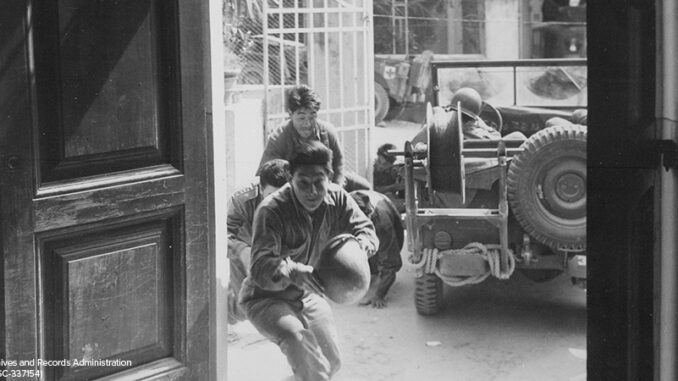
May is Asian American and Pacific Islander (AAPI) Heritage Month–a time to honor and celebrate this community’s many accomplishments, achievements, and contributions. The 442nd Regimental Combat Unit that served during World War II was a segregated Japanese American unit. It became one of the most decorated military units in U.S. history. Here, btw takes a closer look at its remarkable story.
Executive Order 9066

You may have read in your Social Studies classes that Japanese Americans were discriminated against during World War II. Because the United States was fighting Japan as well as Germany, some Americans were uneasy about Japanese Americans, fearing that they might be spies or traitors. President Franklin Roosevelt issued Executive Order 9066, which required more than 100,000 Japanese Americans living on the West Coast to leave their homes. They were forced to relocate to incarceration camps in several places in the western United States, where conditions were harsh. Meanwhile, the U.S. government laid claim to their homes, property, businesses, and other assets.
Who Were They?
Despite all of this, many Japanese Americans still wanted to fight for their country. In 1943, almost one year after Executive Order 9066 was signed, President Roosevelt created the 442nd Regimental Combat Team. Roughly two-thirds of the unit was comprised of Nisei (second-generation Japanese Americans) who were born in Hawaii. The rest were Nisei from the mainland U.S. The 442nd was actually made up of several units–including ground forces, field artillery, a medical detachment, and three infantry battalions. The combat team totaled about 18,000 men. Their motto was “Go For Broke,” and indeed they did. The 442nd participated in the invasion of Southern France, liberating that part of the country from Nazi occupation. They joined the segregated African American 92nd Infantry Division to drive the Nazis back out of northern Italy.
Awards and Honors
The 442nd is the most decorated unit for its size and length of service out of all of the military units in U.S. history. The 18,000 men of the “Go For Broke” unit received over 4,000 Purple Hearts; 4,000 Bronze Stars; 560 Silver Stars; 21 Medals of Honor; and seven Presidential Unit Citations.
A Hero Tells His Story
Norman Ikari was one of the men who served with the 442nd unit during World War II. He was born in Seattle to Japanese immigrant parents and grew up in Southern California. When the Executive Order 9066 evacuation began, Ikari was in basic training. His father requested to return to Japan. The rest of his family was scattered to incarceration camps in Arkansas, eastern California, and the Arizona desert. When he finished basic training, Ikari went to visit his mother, who was living in a camp in Arizona. He experienced intense racism on that visit, even though he was in uniform.
Back at the military base, Ikari was assigned to the hospital unit. In 1943, when the 442nd was formed, he asked to be transferred to the 442nd for two reasons. First, his younger brother was assigned to it, and second, he had become bored by serving in the hospital. In April 1944, he was sent overseas and stationed in Italy. In July, he was injured in combat when enemy gunfire shattered bones in both of his legs. He recuperated for four to five months and was sent back to the United States in June 1945.
After his wartime experience ended, Ikari enrolled at Los Angeles City College and then transferred to UCLA to finish his college education. He majored in bacteriology and hoped to get a career as a doctor. But his lack of strong grades and few personal connection made that challenging. He took a job at the Los Angeles City Health Department.
A second marriage caused Ikari to leave California and settle in Richmond, Virginia. Ikari got a new job in the Veterans Administration hospital in Richmond. When his second marriage ended, Ikari moved to Washington D.C., and got a new job at the National Institutes of Health. A master’s degree followed from George Washington University and Ikari later transferred to Georgetown Medical School. In 1965, Ikari got his Ph.D. from Georgetown.
